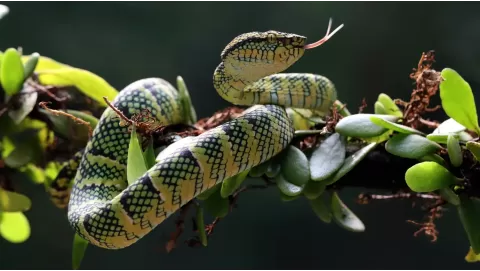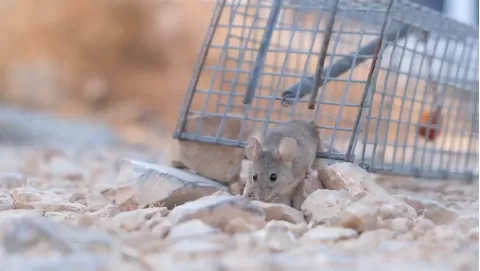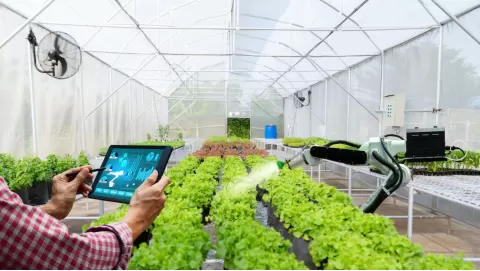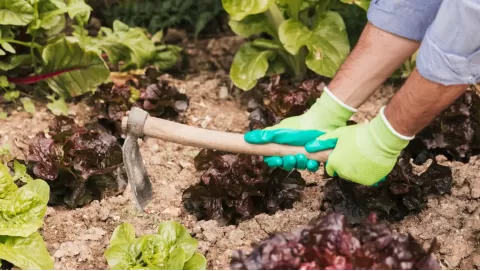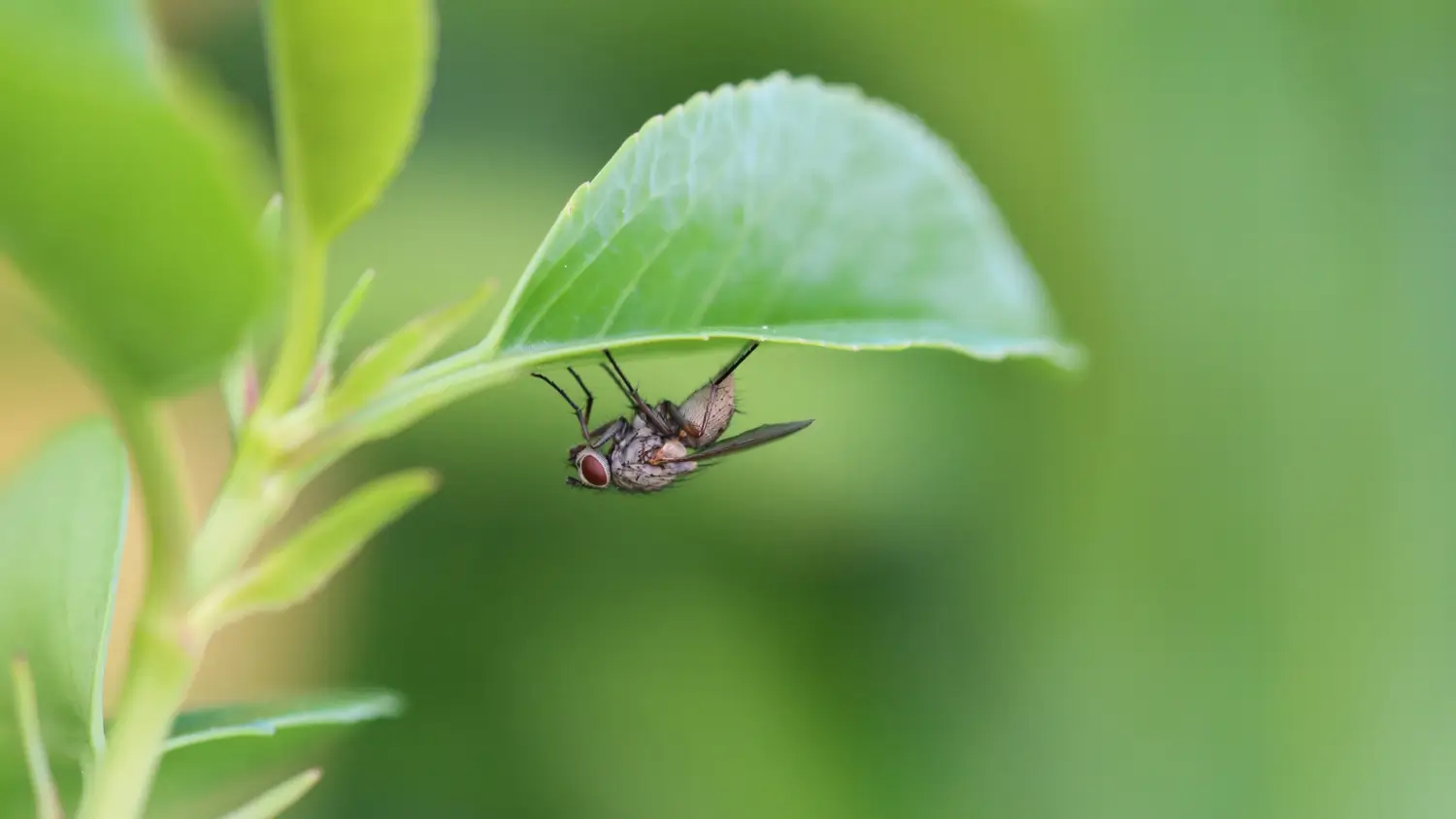
Maximize home freshness: Innovative fruit fly trap solutions for pest-free living
Fruit flies are small insects that typically appear in kitchens and near fresh fruit. They might seem innocent enough, but they can soon turn into a major headache. When they begin buzzing around inside the home, particularly around food or sinks, it means that the environment isn’t quite as fresh and clean as it could be.
The good news is that easy and sensible solutions exist for throwing them out. Using both DIY and store-bought fruit fly traps, anyone can eliminate these nuisances and have a more sanitary, healthier household. All of these pest repellents are easy to use and, when properly set up, can go a long way in keeping living spaces fresh and bug-free.
Maintaining a pest-free home is essential for safeguarding food, maintaining hygiene, and enjoying a more comfortable living environment. Growcycle offers best fruit fly traps to keep homes and gardens pest free.
What are Fruit Flies?
Fruit flies are small insects. However, their reproduction rate is extremely high. There are four main stages in their life cycle:
- Egg
- Larva
- Pupa
- Adult
A female fruit fly is capable of laying hundreds of eggs at a time, typically on or near moist, decaying fruit or other organic material. These eggs hatch in a day or two, and the larvae feed almost immediately. The larvae metamorphose into pupae, where they grow into adult flies in about a week. Under optimal conditions, a complete life cycle can take as little as 8 to 10 days, so infestations can escalate quickly.
Common Causes of Infestation
Fruit flies will typically breed when food is exposed to open air. When attracted to overripe fruits or an open bottle of juice or leftover food scraps, they swarm. Sticky residue on counters or improper cleanup of spills can also attract them. Even a single banana peel in the trash can create problem.
Dirty water is another major cause. If drains are not cleaned or garbage is not taken out regularly, fruit flies can find places to breed. They tend to be more frequent in warm, humid environments as well, so they get worse in the summer or in homes that don’t circulate air well.
Impact of Fruit Flies on Home Freshness and Health
Fruit flies may be tiny, but they can be a huge health hazard. These insects frequently come into contact with dirty surfaces, such as drains, garbage cans or rotten food. If they later land on fresh food, they could transfer germs and bacteria, increasing the risk of contamination. Fruit flies can cause the stomach to swell up after eating food infested with them, or could lead to foodborne illnesses.
People allergic to these bugs may also experience a mild allergic reaction or aggravation of asthma symptoms to the bacteria and mold that fruit flies carry. Though they don’t bite or sting, their presence reduces a home’s level of cleanliness.
Economic and Lifestyle Considerations
Dealing with fruit flies can impact people’s daily lives and budget. A home dealing with a persistent fruit fly issue tends to need more cleaning supplies, food replacements and even professional pest control services. This can get costly over time.
More importantly, they can cause stress and frustration when pests constantly infest the home. They can be embarrassing to have guests over or irritating with the endless buzzing around their food. In comparison, maintaining a bug-free home is stress-free. It fosters a more organised and healthier lifestyle that helps families become more at ease and relaxed in their houses.
DIY Fruit Fly Trap Solutions
While some have their own recipe, homeowners like to make their own traps. DIY traps are appealing because they are inexpensive and easy to make and use household items. They can choose natural and ecologically sensitive materials, which are safer for children, pets and the environment, so people also love them. Homemade fruit fly traps DIY also allow homeowners control as they can mix and match ingredients until they find what works best in their home.
1. Vinegar-Based Traps
An especially effective type of homemade trap uses apple cider vinegar, one of the most common ingredients available.
Ingredients
- ½ cup apple cider vinegar
- A few drops of dish soap
- 1 cup of water (optional, to dilute)
How to make it
- Add the vinegar to a small bowl or jar.
- Add a few drops of dish soap. The soap disrupts the surface tension, causing the flies to sink and be unable to escape.
- Add a little water if needed.
- Leave the trap open, or cover it with plastic wrap and poke a few small holes in the plastic wrap.
Place the trap close to fruit bowls, trash cans or kitchen sinks, where fruit flies typically hang out.
2. Wine or Beer Traps
The strong, sweet smell of leftover wine or beer can also draw in fruit flies.
Simply pour a generous amount of wine or beer into a glass. Loosely cover the top with plastic and poke a few holes. The flies enter but cannot find their way out.
Wine or beer are as effective as vinegar. These work even better than vinegar. However, the alcohol scent tends to dissipate more quickly than vinegar, so they might need to be replaced more frequently.
3. Sugar or Fruit Infused Traps
An equally simple technique is to bait them with sugar or fresh fruit.
- Blend sugar with some warm water and a drop of dish soap.
- Smash a chunk of banana or peach in a jar, cover with plastic wrap and poke holes.
These are particularly effective if fruit flies are being lured to the traps from trash bins or compost areas.
Design Variations and Enhancements
Homeowners can alter the way traps are built so they work better. Some useful ideas include:
- Roll a piece of paper into a cone and put it in a jar upside down. So flies can get in easily but find it hard to get back out.
- Placing plastic wrap over the container and poking holes helps keep the flies in.
- Clear jars or glasses are good because they allow to see when flies are caught.
Commercial Fruit Fly Trap Solutions
Store and online stores sell various fruit fly traps. All of these commercially prepared products are designed to attract fruit flies quickly and easily. They are easy to use, durable and have a high efficiency, so they opted for such.
Commercial traps are often constructed from specially designed lures and materials that have been tested and shown efficacy at attracting fruit flies. They come in clean, sealed designs that can be set around the house without creating a mess.
1. Terro Fruit Fly Traps
Terro is one of the most popular brands for controlling fruit flies. Terro fruit fly traps are compact, apple-shaped containers filled with an all-natural liquid bait. It uses bait that attracts fruit flies and lures them inside, where they are unable to get out.
- Apple shape that fits in with kitchen environments.
- Already loaded with bait, so don’t have to mix anything.
- Simply open the trap and place it in an area with fruit flies.
Numerous customers note that Terro traps begin working within hours. Some users state that within a day or two of use, people can see a marked reduction in fruit flies.
2. RESCUE! Fruit Fly Traps
RESCUE! traps are also a popular option for battling fruit flies. They are reusable and include a liquid attractant that targets fruit fly breeding cycles. Unlike single-use traps, the RESCUE! users can refill and reuse the container, which is a cost-effective one-time investment.
- Powered by an advanced food-based attractant.
- The sturdy plastic planter can be used indoors.
- Reuse with easy refill options.
- Works for 30 days per refill
Many people like that they don’t have to keep buying new traps. Reviews also mention that RESCUE! Traps work especially well in homes with large or recurring infestations.
3. Zevo Indoor Fly Trap
Zevo is a more high-tech solution to indoor fly control. t employs blue and UV LED lights to lure in flying insects, such as fruit flies. Once the flies are lured in, they become adhered to a hidden sticky pad within the contraption.
- LED light technology and plug-in design.
- No chemicals or smells.
- Sticky pads catch flies in a subtle fashion.
- Stylish appearance, blending into home decor.
Zevo is noted for its quiet, odor-free operation. Users appreciate that it can operate around the clock without intervention, and it isn’t dependent on liquid bait. But it is pricier than most conventional traps.
Maintenance and Replacement Guidelines
- Disposable traps (e.g., Terro): Dispose of after 30 days or when full.
- Reusable traps (like RESCUE! ): Clean container, refill with bait, reuse.
- Plug-in traps (such as Zevo): Change the sticky pad or refill as necessary, typically once a month.
Always follow the directions on the packaging to maintain the effectiveness of the trap.
Advanced Techniques & Innovative Trends in Fruit Fly Management
New technologies and eco-friendly ideas are transforming fruit fly control into a smarter, greener process. Now, companies are creating smart traps that can sense pests by using small sensors. Some of these traps can even send notifications to a phone or smart device when fruit fly activity is elevated. This enables people to take action before an infestation develops.
Many brands are transitioning to natural and biodegradable materials. It is also increasingly common to use traps made of compostable or non-toxic components. These products are also more environmentally friendly and safer for families and pets.
Some more recent traps use LED lights and battery-operated fans to lure fruit flies silently and quickly, without employing chemicals at all.
Integrating Smart Home Systems
One awesome future possibility is connecting the best fruit fly traps to smart home systems. In one household, traps can be connected to a smart assistant, such as Alexa or Google Home. These frameworks may send reports about trading tasks to update misleading systems or display reports on pests in different rooms.
This type of smart pest control could be particularly useful in the following situations:
- Multi-problem large homes.
- Busy families requiring automatic notifications.
- Apartments or food businesses where the speed of motion is critical.
A connected home makes it easier to prevent pest issues without needing to check traps proactively.
Maintain a Pest-Free Home Environment
Traps may catch fruit flies, but they are most effective when paired with good housekeeping practices. Fruit flies flock to leftover foods, sticky spills and wet areas. That’s why the first line of defense is a clean home.
Some essential cleaning tips include:
- Wipe kitchen counters daily.
- Wipe up spills immediately, particularly anything sugary.
- Empty trash cans regularly.
- Empty and rinse out food and drink containers before putting them into recycling bins.
- Use hot water or natural drain cleaners to keep drains clean.
Routine maintenance schedule:
- Daily: Wipe surfaces, wash dishes, store food properly.
- Weekly: Take out the trash, clean the drain in the sink and inspect for spoiled fruit.
- Monthly: Thoroughly clean behind appliances and inside cabinets.
Preventative Measures
To prevent fruit flies, remove what they love, like overripe fruit or unrefrigerated food containers.
- Keep fruit in the refrigerator or covered containers.
- Never leave out juice or wine glasses overnight.
- Secure pet food and compost bins.
- Wash it as soon as you get home with it.
- Use airtight jars to store sugar, honey and syrups.
Proper waste management is also very important. Rinse out containers before placing them in the recycling bin. Compost bins should be kept sealed or stored outside.
Recycling zones should also be cleaned frequently since fruit flies love the residue left behind in bottles and cans.
Long-Term Strategies for Home Freshness
To maintain a fresh and fruit fly free home, it’s helpful to follow seasonal habits and do a quick check of problem areas every so often.
- Make sure not to leave food out for too long in the warmer months, flies breed faster in heat.
- While cleaning in the spring, do it behind the fridge or clean sweating spots like stoves.
- Examine window screens and doors for tiny openings that flies could slip into.
- Keep gutters and areas in close proximity to the home, like outdoor trash areas, clean in the summer.
Routine home inspections are also helpful. A quick glance around the kitchen, pantry or garbage area can help catch signs of fruit flies early. Resolving minor annoyances like dripping pipes, worn seals or loose lids can prevent larger headaches down the road.
FAQs
What is the best solution for fruit fly traps?
While the best fruit fly traps vary by need, commercial option(s) like Terro deliver diametrically in immediate results. They arrive pre-hydrated and are known to lure and trap fruit flies effectively.
Are commercial fruit fly traps better than homemade ones?
Commercial traps, like Terro or RESCUE! may be easier to use since they are pre-filled and may have longer shelf lives. On the flip side, fruit fly traps DIY are inexpensive and customizable. Commercial traps may also be more appropriate for larger infestations.
How often should I change or clean fruit fly traps?
For DIY traps, change or wash normally each 3-5 days to remain successful. With commercial traps, read the directions on the package, but generally speaking, disposable traps (like Terro) should be replaced every 30 days, and reusable traps (like RESCUE!) can be refilled for an extended duration.
The Bottom Line
Fruit fly traps presence can also make the kitchen messy, spread germs and make the space feel less fresh. They are drawn to such items as overripe fruit, food scraps and sticky spills. But a home can be kept fruit-fly free by using traps and having some basic cleaning habits. Visit Growcycle for a collection of homemade fruit fly traps aimed at helping homeowners rid their areas of pests.
Disclaimer: This material is for informational purposes only and should not be relied on for legal, medical, financial, or any other form of professional advice.






